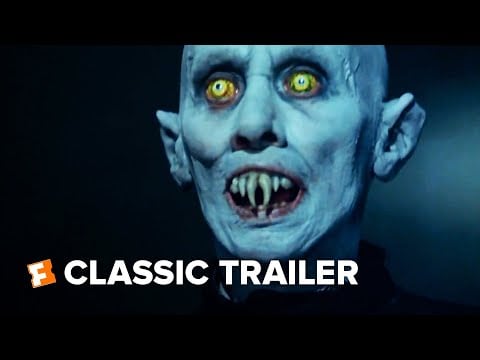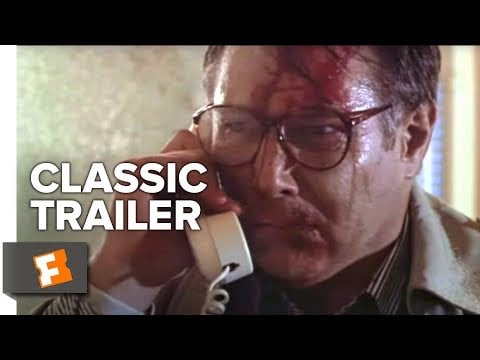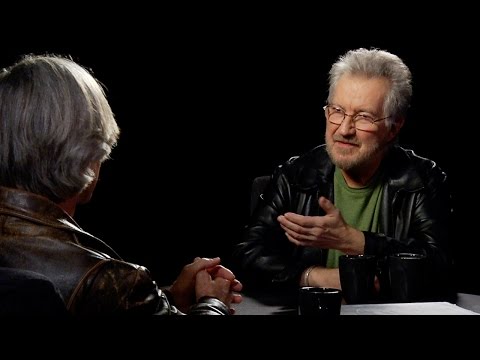Tobe Hooper’s “Salem’s Lot” (1979) was the first televised miniseries based on the 1975 Stephen King novel and a successful, influential one at that.
In fact, despite content restrictions for 1970s television and having varying spinoffs, sequels and remakes, it’s still one of the best long-form movies based on any King book.

After a brief prolog, establishing where the story is going eventually, we are brought to the town of Jerusalem’s Lot, two years earlier. David Soul stars as Ben Mears, a successful novelist who returns to his childhood home and is full of dread over his memories of the looming Marsten House.
Though Ben is planning to write about the house for an upcoming novel, he becomes distracted by his rekindled feelings for Susan (Bonnie Bedelia).
Meanwhile, David Straker (James Mason) the new owner of the Marsten House, is planning to open an antique shop (shades of “Needful Things,” King’s forthcoming 1991 novel). He casually drops the news that he’s working for a mysterious fellow named Barlow.
When two local boys vanish and only one reappears, the town becomes paranoid. Their fears are justified, particularly when the missing child is spotted by his brother in his bedroom window, floating, smiling and hungry.
FAST FACT: TNT aired a two-part “Salem’s Lot” remake in 2004 starring Rob Lowe as Ben Mears.
Hooper’s miniseries premiered in November of 1979 and was a captivating attraction for home-viewing audiences. Having just re-read King’s novel, I can report that the film is faithful to the book’s structure, with the made-for-TV restrictions present, but not in how one would expect.
The problem isn’t the lack of profanity or vivid gore, but how the cinematography captures the boxy compositions of the era.
Soul has a strong presence but is kind of aloof as Mears. Bedelia shines in an early role and it’s amusing to see Fred Willard, seen here at the beginning of his long career, in a role devoid of his comic brilliance.
Mason is stylish and authoritative as expected, even in scenes where he does very little. Mason is the film’s most compelling character – Renfield as an elegant, well-spoken public figure who, nevertheless, sold his soul long ago.
There’s also George Dzundza in a supporting role and King alumni Kenneth MacMillan (who’d later star in the 1985 “Stephen King’s Cat’s Eye”) and Bedelia (who stars in 1993’s “Needful Things”).

Ed Flanders also turns up and is authoritative in any role (though his finest hour is still 1980’s “The Ninth Configuration”) and Geoffrey Lewis is also on hand and extremely effective. This is a solid line-up of actors for a 1970’s TV-movie, especially one that isn’t a lush costume drama (like juggernauts in their day “The Thorn Birds” or “The Winds of War”) but a vampire thriller.
“Salem’s Lot” is a slow burn, just like the novel, offering the great pleasure of seeing so many actors in their element. In this TV version, the locals are now more folksy. They were largely abusive behind closed doors in King’s book.
The scene of a gun-toting Dzundza, terrorizing his wife and her lover, is a gritty exception and a strong holdover from the book.
Hooper may be dealing with TV content standards, but his movie still maintains an edge. The most legendary scene – that nighttime encounter between two brothers is still chilling.
What makes it still so scary after all these years? Easy. That little boy appears so gleeful to be among the undead.

There are some surprisingly aggressive jump scares and the sad discovery of a deceased dog. Despite how legendary the bedroom window encounter has become, a moment easily as scary is when Lewis inspects a coffin he’s burying – the long build up to the big reveal is well done.
This is a 1970’s “Dracula,” if Bram Stoker’s novel were fused with “Our Town” and “Peyton Place.” There’s also a nice nod to “Psycho” (1960), as Flanders ascends a staircase like Martin Balsam once did, complete with an overhead shot.
Soul, who we lost earlier this year at the age of 80 and had the #1 hit song “Don’t Give Up on Us” in 1977, gives an especially interesting turn because he’s ostensibly playing King. Yes, I described his acting as “aloof” earlier, but he’s also effective.
His eyes suggest years of anguish.
Hooper honors his horror history with “Frankenstein” and “The Wolf Man” posters prominently hanging in the boy’s bedroom. As in Hooper’s notorious “The Texas Chainsaw Massacre” (1974), the jolts and sharp cutaways are effective.
While the violence was under careful network scrutiny, Hooper still manages (at least in the full three-hour version that is available, as well as a two-hour “Salem’s Lot: The Movie,” which received a theatrical release in 1980) to push the limit. Recall an impalement on a set of deer antlers.
Alternative poster for Tobe Hooper’s Salem’s Lot by Christopher Shy pic.twitter.com/3WznL3WqpY
— Eyes On Cinema (@RealEOC) March 27, 2018
Once we finally get a look at our central antagonist, Barlow the vampire proves to be incredibly scary, particularly for his lack of elegance. Unlike Straker, Barlow is a mindless killing machine.
The elegance we expect from a Dracula-like character can be found in Straker, not Barlow, who is simply a monster.
This proved to be a good creative period for Hooper, who followed it up with the wonderful “The Funhouse” (1981) and “Poltergeist” (1982). It ends as the novel did with a strong epilogue. However, if you’re reading the novel for the first time or re-reading it, I highly recommend the full, three-hour miniseries version and not the truncated theatrical release.
Hooper’s film will never garner the kind of horror infamy longevity that is permanently scrawled to his infamous “The Texas Chainsaw Massacre” but, even with those pesky network restrictions, his “Salem’s Lot” still has teeth.
The post ‘Salem’s Lot’ Delivered Timeless Nightmare Fuel appeared first on Hollywood in Toto.
from Movies - Hollywood in Toto https://ift.tt/jefnpto

0 Comments: